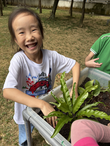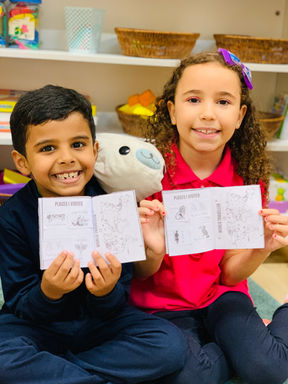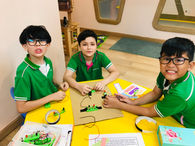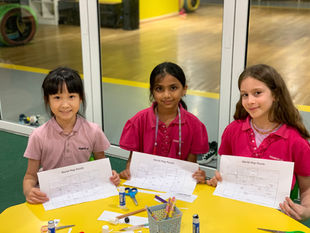
Our
CURRICULUM
At Primrose Hill Active Learning, we provide a broad and balanced curriculum which develops our children according to their age and ability.
Our curriculum brings to life our logo and motto. Through our curriculum, we are helping to develop active world citizens who have a strong sense of self and know themselves as learners, enabling them to question their understanding. They learn how to be healthy, both physically and emotionally, and acquire essential life skills. They understand that they are part of a community and actively contribute to it. They also gain knowledge about the city and country in which they live, along with an awareness of the wider global environment and the issues it faces. Ultimately, they come to see themselves as individuals capable of having a positive impact on their lives and surroundings.
The aim of the Primrose Hill Curriculum


Welcome to the Cambridge International Curriculum
Primrose Hill strives to integrate all lessons to ensure that children are applying what they have learned during their sessions to the outside world. This approach is how Primrose Hill nurtures and supports independent, intelligent, and confident young learners.
In Maths, our learners develop a holistic understanding of the subject, focusing
on principles, patterns, systems, functions, and relationships. They become
mathematically competent and fluent in computation, applying these skills
to everyday situations. A unique feature of our curriculum, ‘Thinking and
Working Mathematically’, encourages learners to engage in discussions,
challenge ideas, and provide evidence to validate conjectures and solutions.
When thinking and working mathematically, learners actively seek to make
sense of ideas and build connections between different facts, procedures, and
concepts. This fosters higher-order thinking and helps them view the world in a mathematical way.
In English,
our learners develop skills and
understanding in four areas: reading, writing,
speaking, and listening. They learn to communicate
effectively and respond to a variety of information, media,
and texts in ways that help them become confident communicators,
able to apply all four skills in everyday situations. They also see themselves
as readers, engaging with a wide range of texts for both information and
pleasure, including texts from different times and cultures. Additionally, they see themselves as writers, using the written word clearly and creatively for different
audiences and purposes.
For the wider curriculum, we use a topic-based approach to learning that taps
into children’s natural curiosity while ensuring that all statutory requirements
are covered during their time with us. Our educators employ Active
Learning teaching methods, which are adapted according to the subject,
age, and ability of each individual pupil. To encourage integration across
all subjects, we have introduced Forest Studies, which allow children to
explore and understand the importance of forests and rainforests
around the world.


















